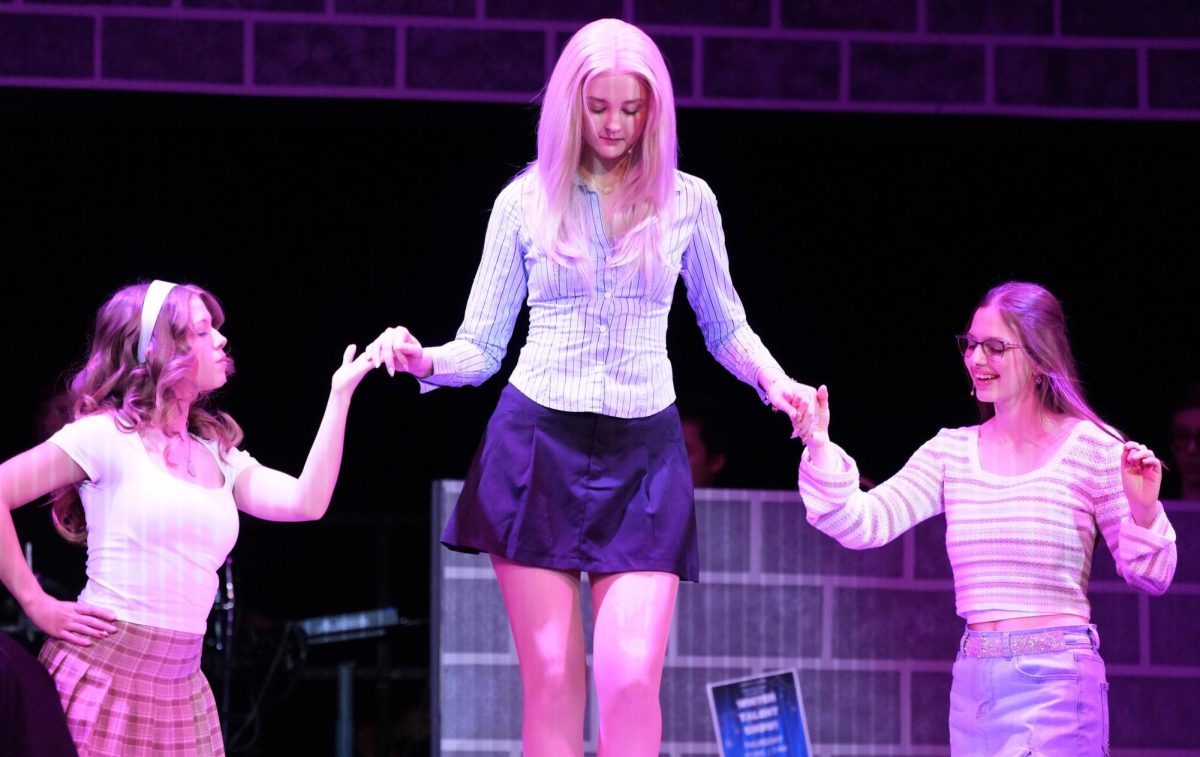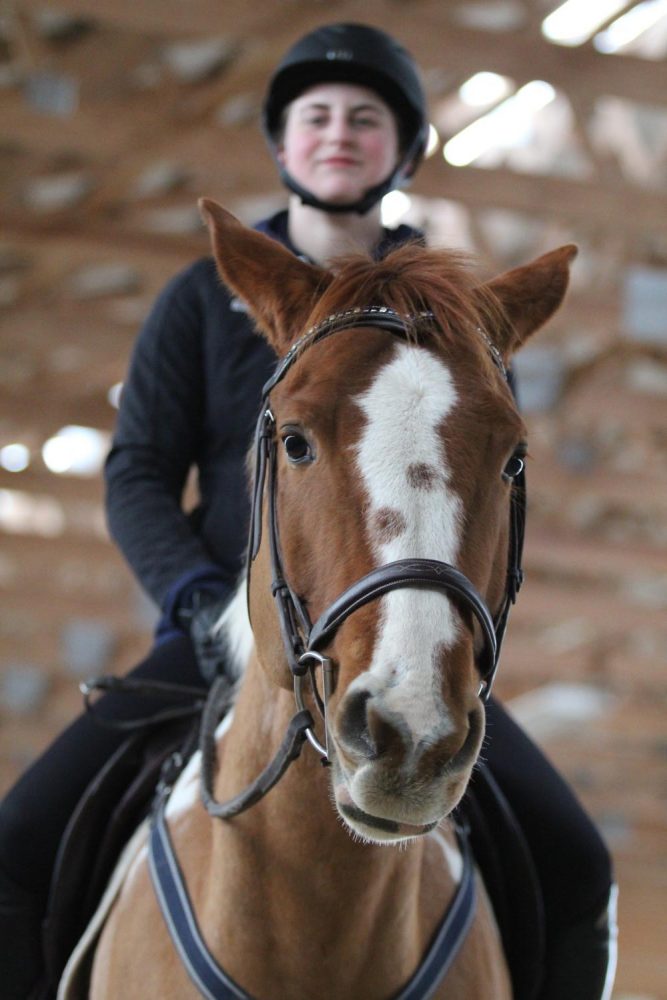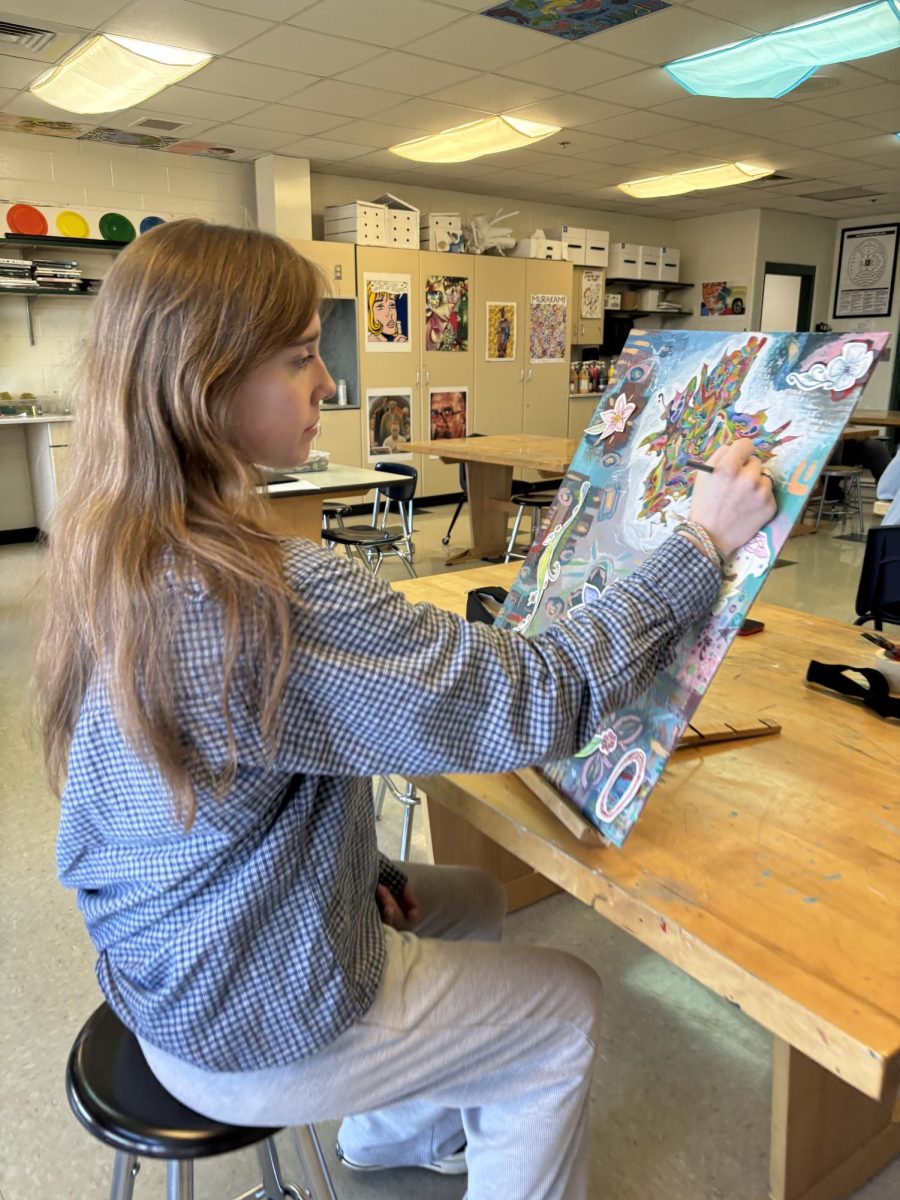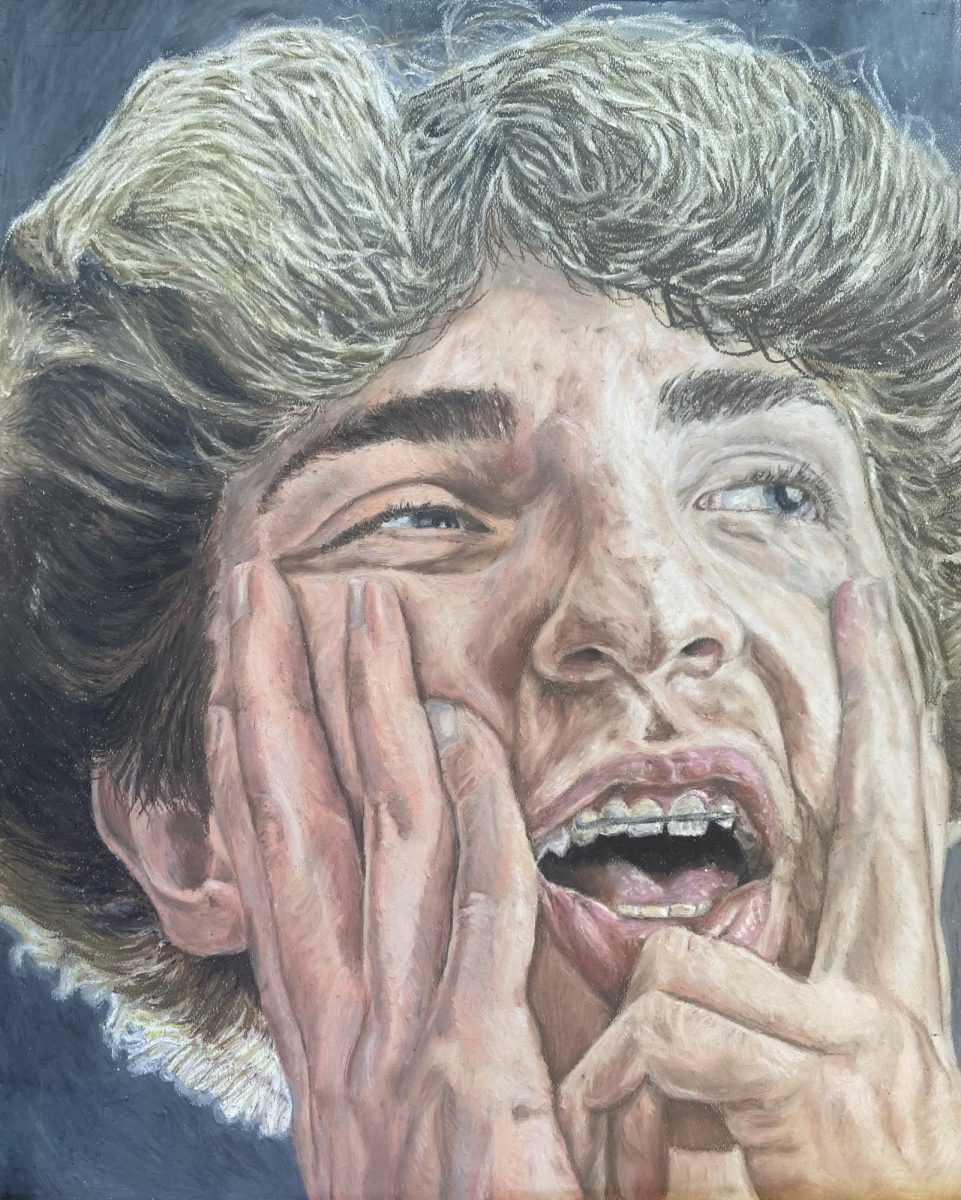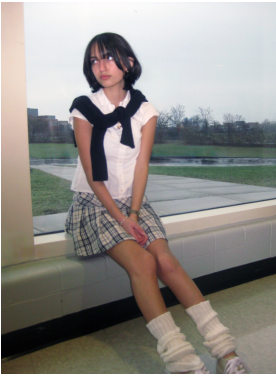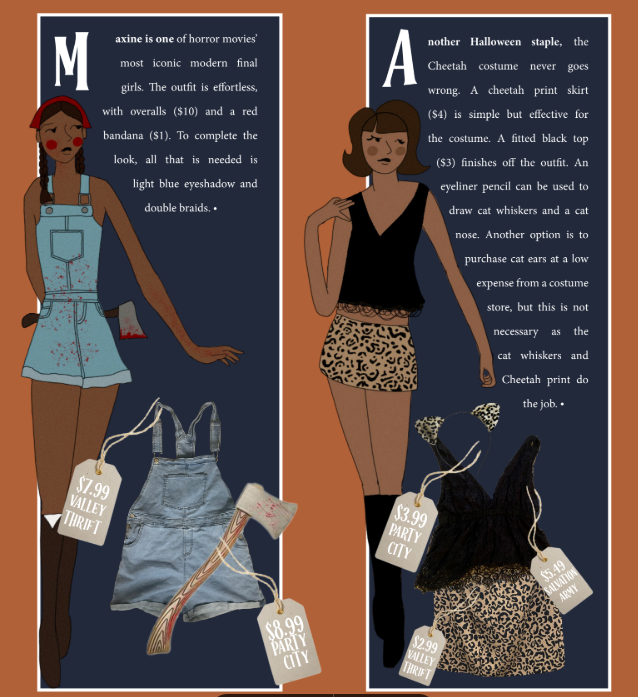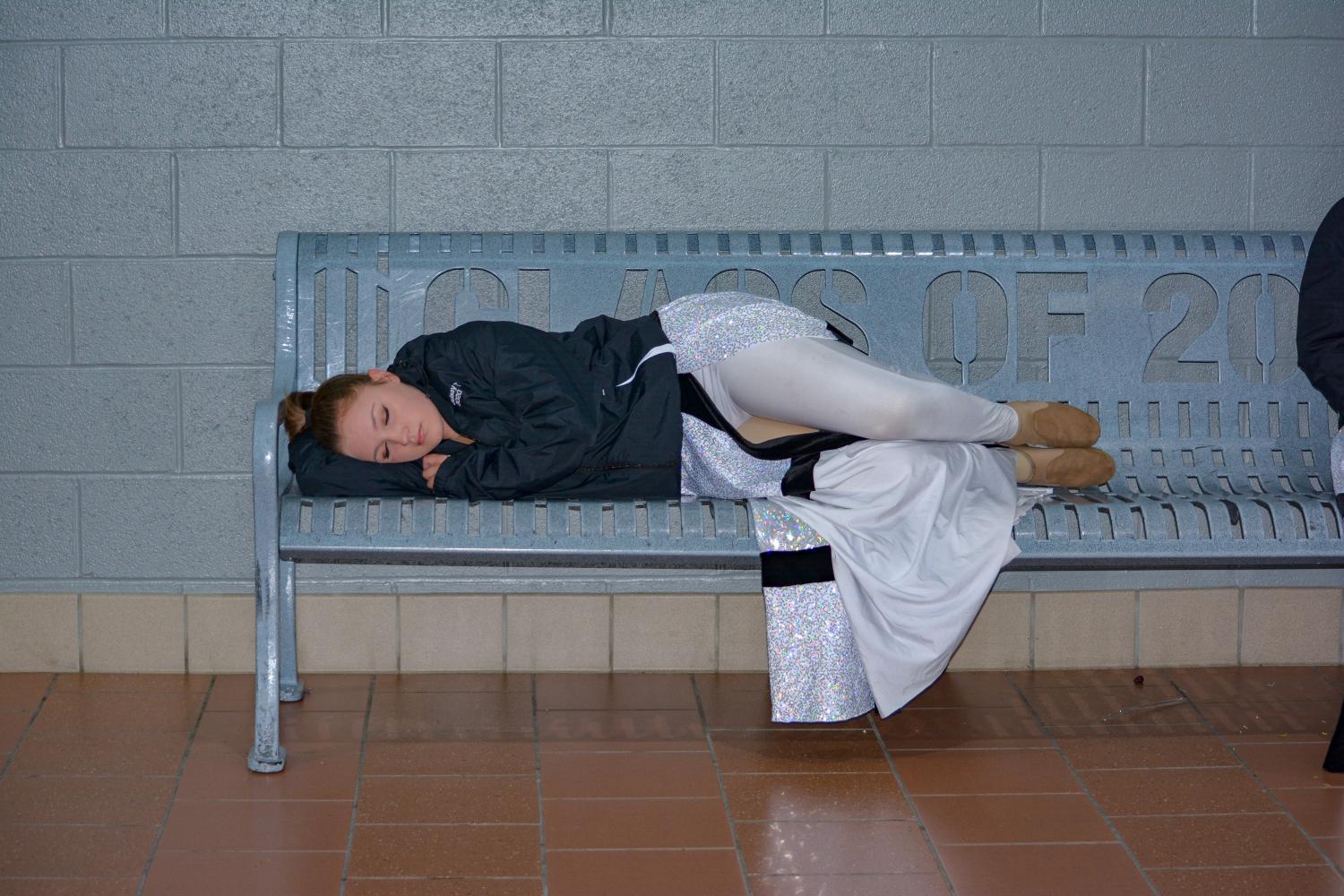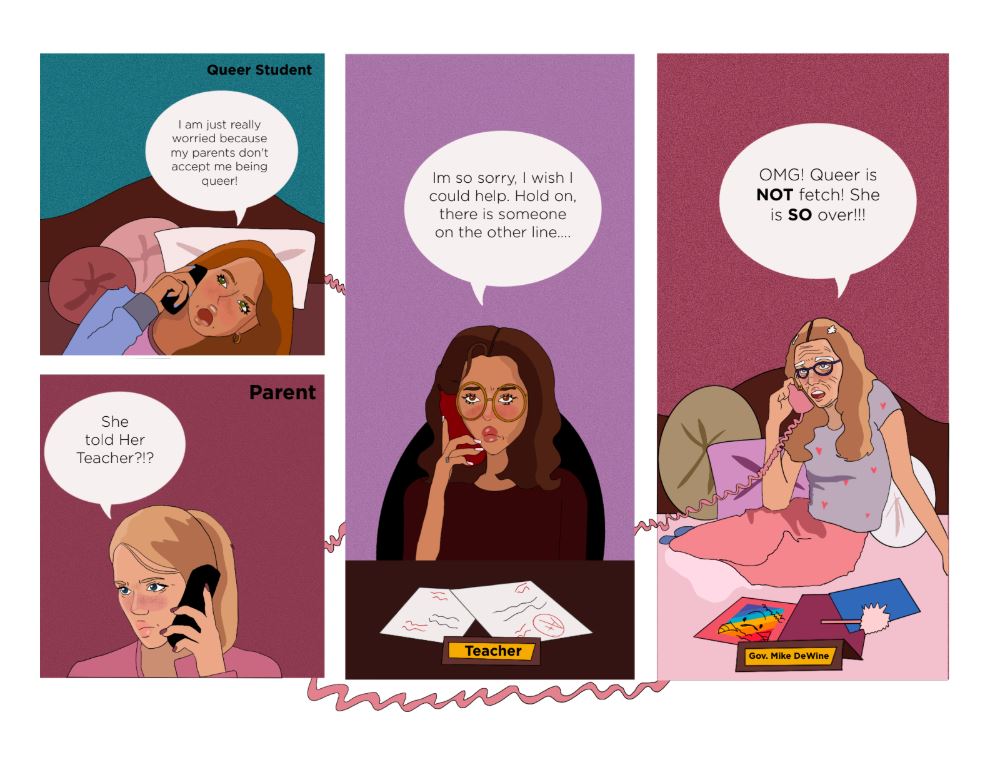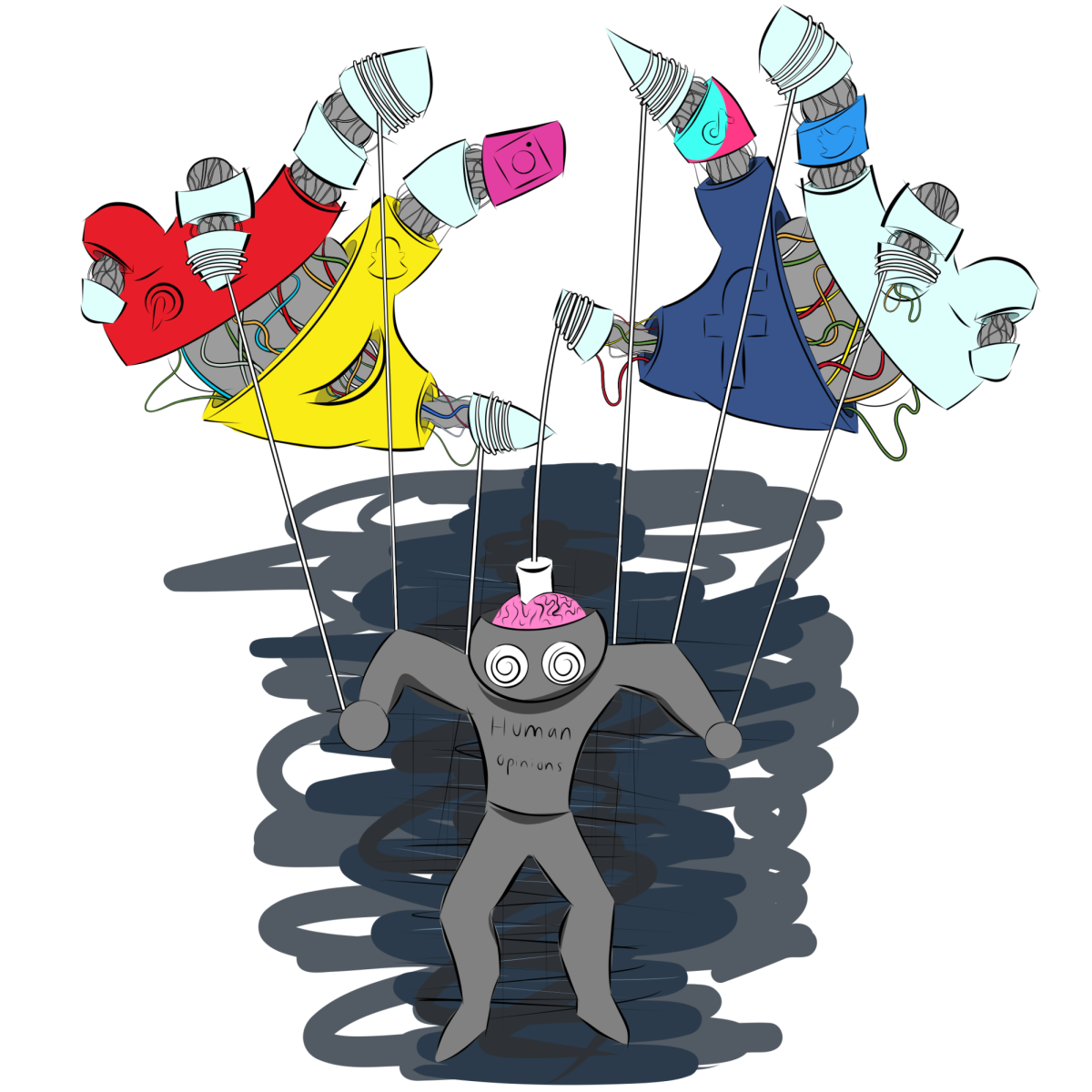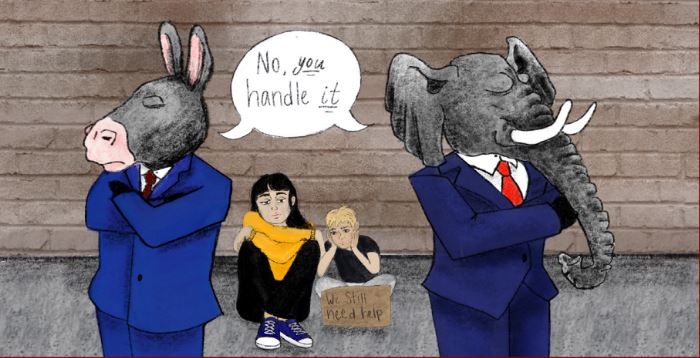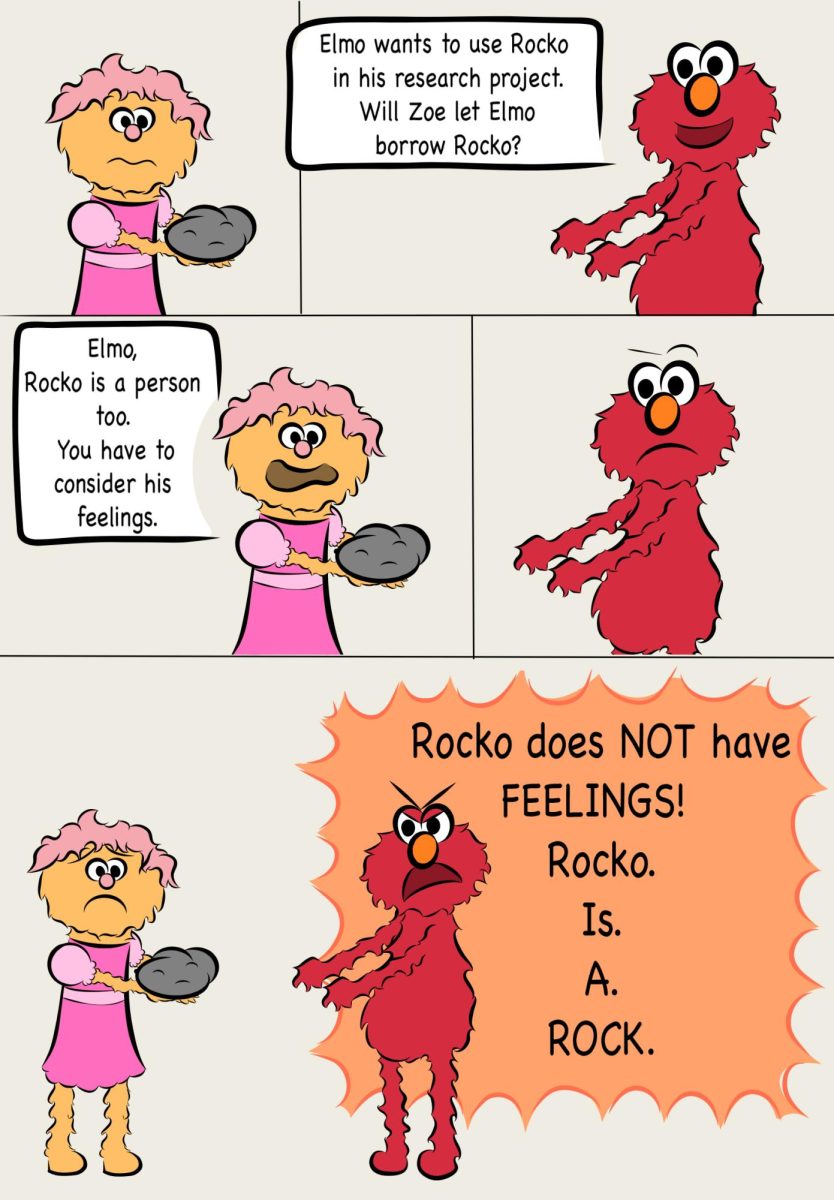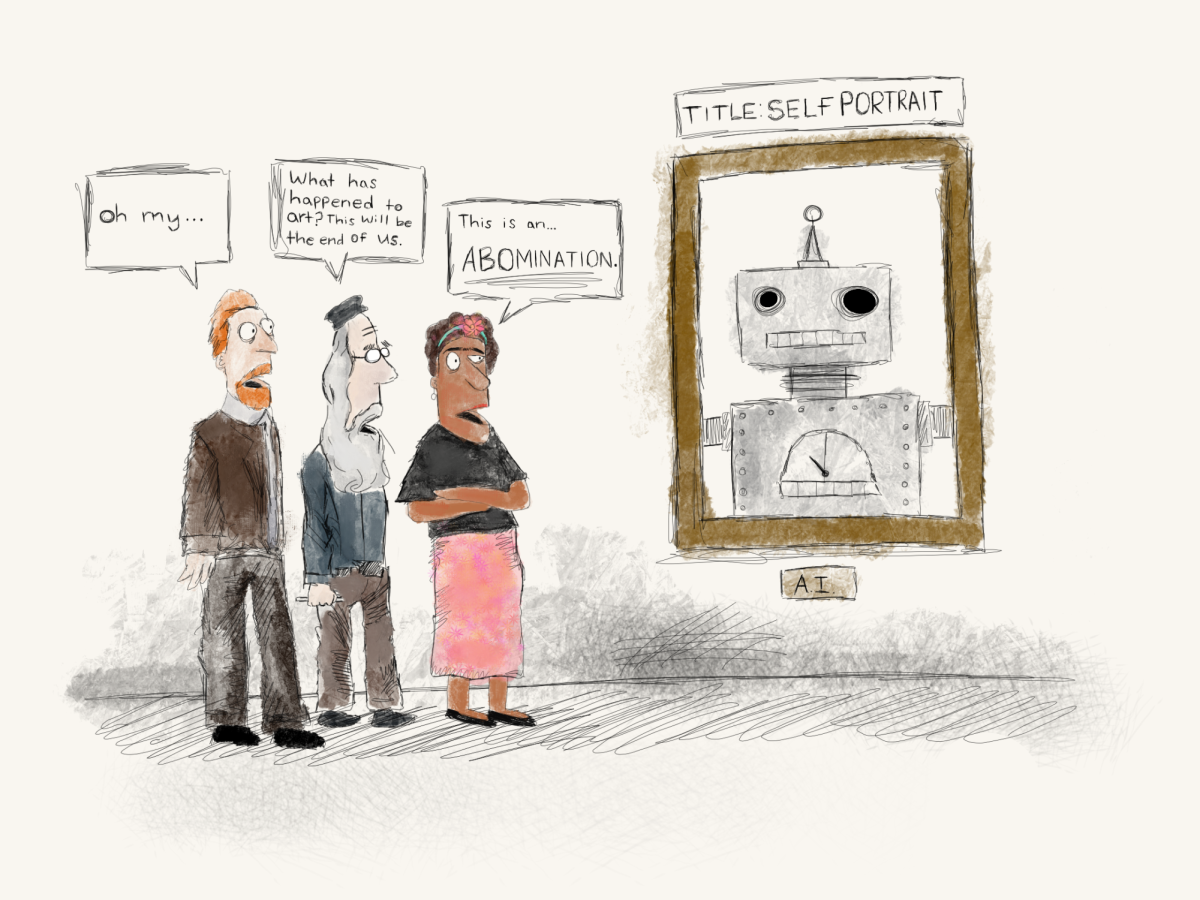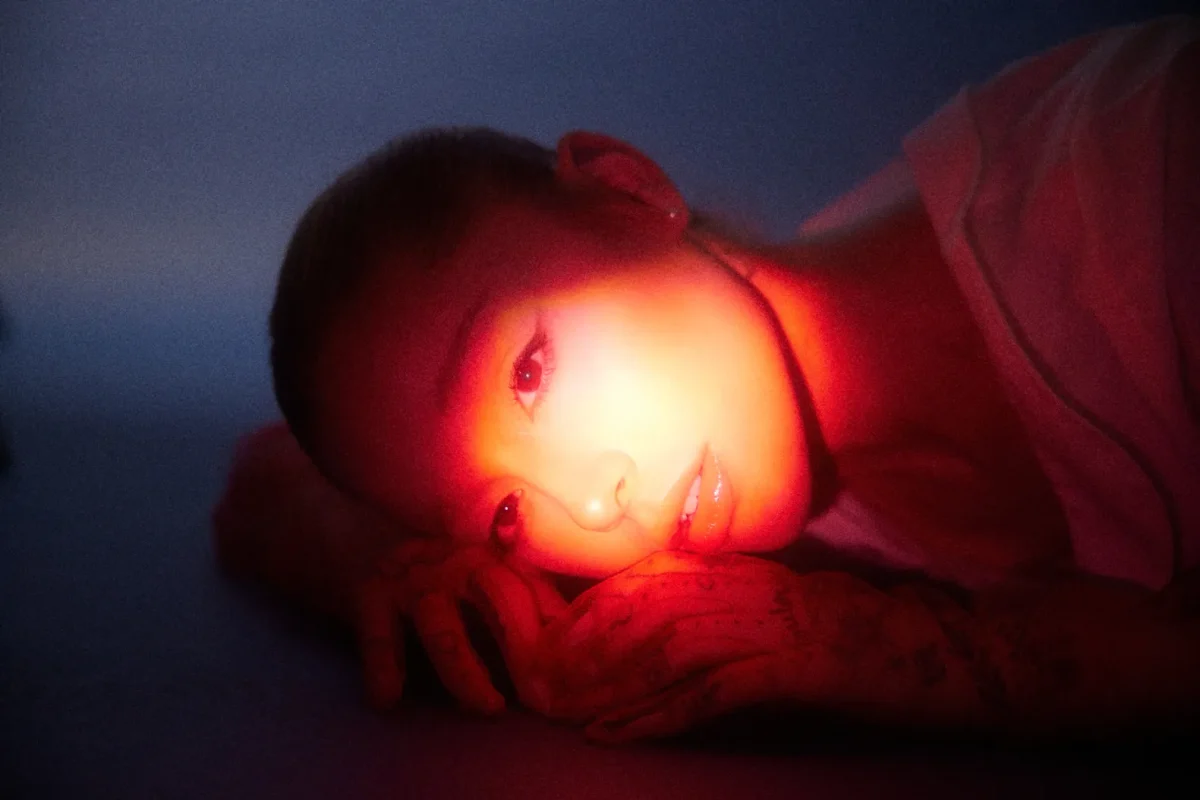REVIEW NATALIE MAZEY | ART FAIR USE
“The Sky Is Everywhere” had virtually everything going for it: a visionary director in Josephine Decker, a star-studded cast, and a heart-wrenching storyline. Jandy Nelson, who wrote the book that the movie is based on, crafted a world of wonder in the midst of heartbreak, one that would require great care to transfer to the screen. Its film counterpart was able to capture the whimsical nature of Nelson’s world but failed to embody the heart behind her words.
The story follows Lennie (Grace Kaufman) as she navigates a world without her sister Bailey (Havana Rose Liu) to act as her guide. Since Bailey’s passing, Lennie has entered a state of all-consuming grief, tossing away her lifelong dream of attending Julliard and quietly handing over her position of first chair clarinet in band. She finds herself rereading Wuthering Heights, her favorite novel, and laying in Bailey’s bedroom as she grapples with the reality now sitting in front of her and two boys that have entered her life.
In an attempt to mirror the eccentric air the novel possessed, the movie was flooded with quirky, imaginative scenes. Vibrant colors and cartoonish animation developed a distinct atmosphere unlike anything currently circulating in the media. When Lennie first encounters her new crush Joe (Jacques Colimon) in the band room, playful music notes bounce through the air, causing the people lining the hallway to swoon. As Lennie grapples with her loss while walking through the woods, pieces of her house fall like dominoes from the sky. As Lennie and Joe sit listening to music in the grass, dancers become the roses in the garden, delicately portraying the symphonies echoing in Joe’s headphones. Standing alone, these scenes were beautiful to look at. Putting them in the context of the storyline, however, they become insincere and shallow.
It is not Grace Kaufman’s fault her depiction of Lennie lacked the depth of the Lennie that Nelson created. So much focus was put into creating an aesthetic that it seems crafting well-rounded characters and an impactful storyline was almost entirely forgotten. In every moment that tears began to form in my eyes as Lennie navigated her grief, the scene abruptly cut off and took the viewer to an entirely different emotional place. The Lennie developed in the movie was not allowed to grieve. She was called to be a lovesick teenager who seems to care more about crushes than the death of her sister–that was not the Lennie that Nelson created, nor did her portrayal clue the reader into why Lennie was behaving the way she was.
In every book-to-movie adaptation, some plot points will need to be altered to let the story shine on screen. The changes made to “The Sky Is Everywhere” allowed the director to explore minuscule scenes in a robust way, but some of the major plot points that were cut out made the movie difficult to comprehend. In changing the background surrounding Lennie and Bailey’s mom, Lennie, her grandmother (Cherry Jones), and her uncle (Jason Segel) were largely reduced to one-dimensional characters. Their grief became too clear-cut and easy to digest, something the book does not shy away from making messy.
If you want to spend an hour and 43 minutes in awe of creative cinematography without care for the plot, this is your movie. If you want to connect with complicated, lovable characters and understand the world a bit differently, I recommend staying far away from this film and reading the book instead.


